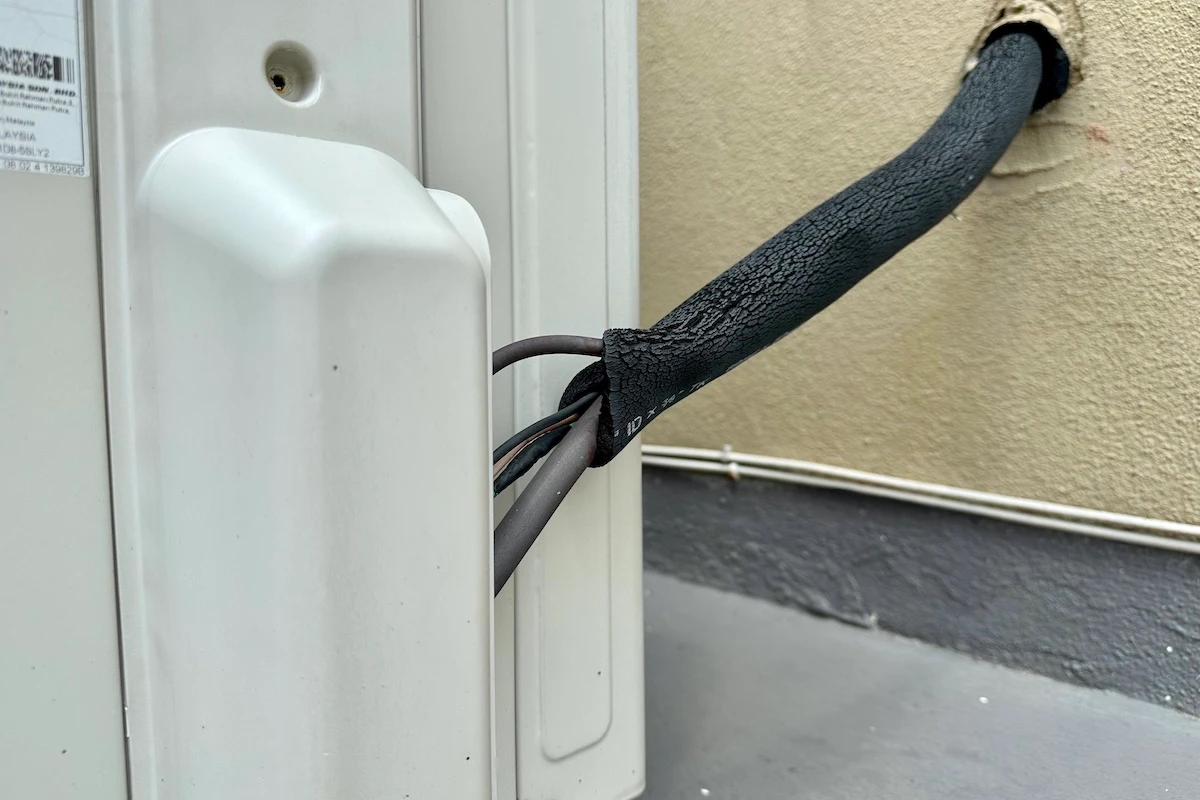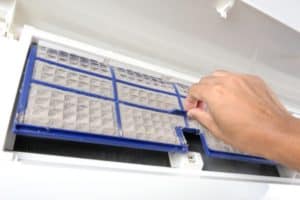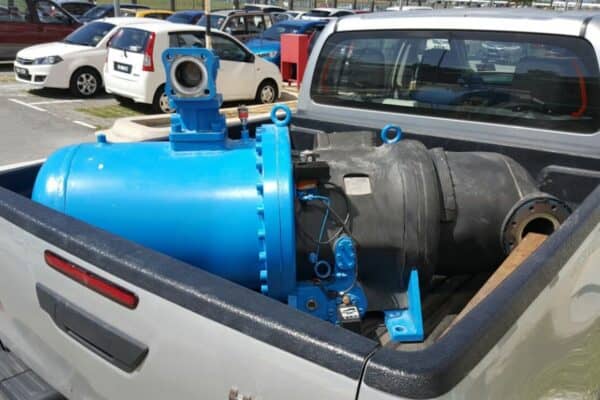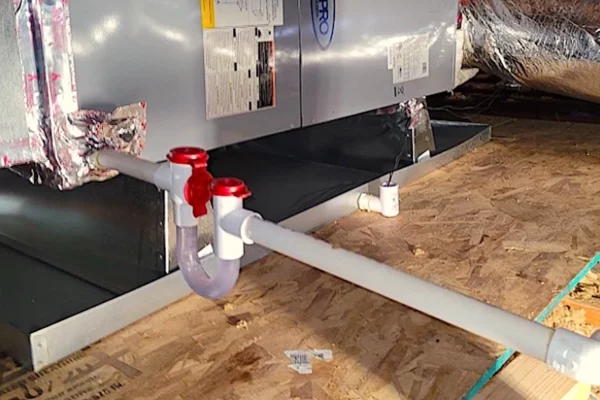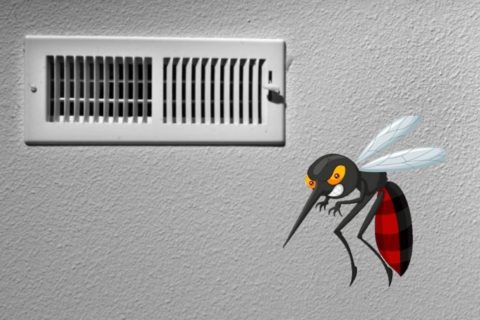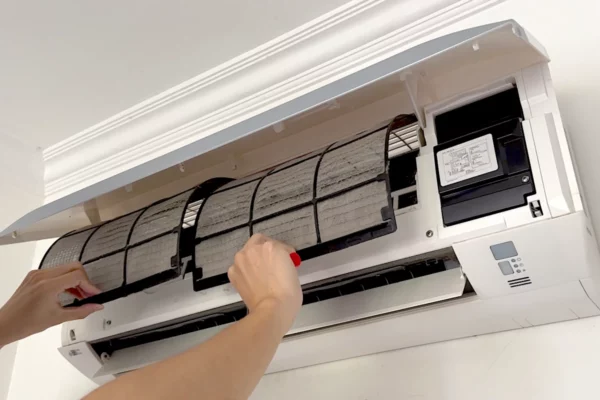Should Split AC Piping Be Insulated Together or Separately?
When it comes to the insulation of the refrigerant copper piping of split air conditioners, there is always a debate whether the liquid pipe and the gas pipe should be insulated together or separately. So, this article will address it once and for all.
Split air conditioner refrigerant piping should be insulated separately to eliminate the air gaps between the pipe and the insulation material which can lead to condensation. The condensate water can damage the insulation material and reduce the performance of the air conditioner.
Although it is generally recommended to insulate split AC piping separately, many split AC pipes are insulated together and they don’t seem to have any problems. So, what’s the catch here?
Why Split AC Piping Need to Be Insulated?
A split air conditioner has one indoor unit and one outdoor unit. The indoor unit is known as the evaporator and the outdoor unit is known as the condenser.
Split air conditioners work by compressing the refrigerant from a low-pressure vapor to a high-pressure vapor, increasing the refrigerant temperature in the meantime. Then, the high-temperature vapor goes to the condenser coil where it gets cooled by the ambient air.
After passing through the condenser coil, the refrigerant turns from vapor to liquid. At this stage, the refrigerant temperature and pressure are still high.
Next, the high-pressure vapor goes through a metering device and expands, causing the pressure to drop rapidly and so does the refrigerant temperature. A metering device can be an electronic expansion valve (EEV), a thermal expansion valve (TXV), or a capillary tube.
Subsequently, the cold refrigerant leaves the outdoor unit and travels to the indoor unit where it absorbs heat within the house by passing through the evaporator coil where it evaporates.
During the evaporation process, the refrigerant temperature does not change much because heat is used to turn the refrigerant from a liquid-vapor mixture to 100% vapor. So, the refrigerant leaves the indoor unit as a low-temperature vapor.
To learn the working principle of air conditioners in detail, check out my article on Air Conditioner Working Principle Simple Explanation with Diagram.
From the working principle of split air conditioners, we can see that the refrigerant leaves the outdoor unit as a low-temperature liquid-vapor mixture and enters the outdoor unit as a low-temperature vapor.
Given that the temperature of the evaporator coil on average is about 10-14°C (50-57°F), the copper pipes that carry the refrigerant is almost the same temperature since it is a very good heat conductor.
Assume that the outdoor temperature is 30°C (86°F) and the relative humidity is 65%, the dew point is about 23°C (73°F). If the refrigerant pipes are not insulated, condensation will definitely happen.
Besides, if the refrigerant pipes are not insulated, the cold refrigerant will absorb the heat from the ambient air the moment it leaves the outdoor unit which reduces it ability to absorb heat at the evaporator coil, leading to a performance drop.
That’s why we need to insulate the refrigerant pipes.
Why Split AC Piping Should Be Insulated Separately?
When split air conditioner refrigerant pipes are insulated together, there are air gaps between the pipe and the insulation material. The surface temperature of the refrigerant pipe can reach the dew point of the air that is present in these gaps. Hence, condensation can happen.
If condensate water droplets are formed on the surface of the refrigerant pipe, they’ll be absorbed by the insulation material and cause the insulation material to shrink. When the thickness of the insulation material reduces, the insulation capability reduces as well.
In extreme cases where the ambient temperature and humidity are high, the entire refrigerant line that is insulated together may condensate heavily due to the chain effect.
So, that’s why manufacturers always recommend insulating split air conditioner piping separately. It ensures there are no air gaps between the pipe and the insulation material.
Why Some Split AC Pipes are Insulated Together?
Some split air conditioner pipes are insulated together despite being told not to do so. Nonetheless, there is no condensation and they seem to work just fine. Why is that?
Well, in many places, the ambient temperature and humidity are not high enough to cause the air in between the pipe and the insulation material to condense. Hence, no condensation.

In addition, refrigerant pipes embedded in the wall have extra insulation thanks to the concretes and bricks. Thus, the liquid line and the gas line can be insulated together.
Mini splits can run their refrigerant lines in the wall, see How to Run Mini Split Lines in Walls.
Furthermore, refrigerant pipes run in air-conditioned spaces are less prone to condensation. Hence, they also can be insulated together without causing any problems.
Why Some Split AC Pipes are NOT Insulated?
For some split air conditioners, only one of the refrigerant pipes is insulated. The other refrigerant pipe is not insulated at all, exposing the bare copper pipe. Why is that?
As mentioned earlier, after the refrigerant passes through the condenser coil, it enters a metering device and expands. However, not all split air conditioners have a metering device inside the outdoor unit. Some of them have the metering device inside the indoor unit.
Traditional split air conditioners or central air conditioners have the metering device inside the indoor unit, or better known as the air handler, evaporator coil or cooling coil. These air conditioners do not have to insulate the liquid line, which is the pipe that carries the refrigerant from the outdoor unit to the indoor unit.
When the metering device is located inside the indoor unit, the temperature of the liquid refrigerant remains high when leaving the outdoor unit. Depending on the operating conditions, the refrigerant condensing temperature can be in the range of between 24-48°C (75-118°F).
The lower the ambient temperature, the lower the refrigerant condensing temperature. At the same, the lower the ambient temperature, the lower the dew point.
So, condensation won’t happen if the liquid line is not insulated.
On top of that, the liquid line is always about 7-11°C (10-20°F) higher than the ambient temperature. The refrigerant can continue to condense ever so slightly by the ambient air. Hence, it is beneficial not to insulate the liquid line.
However, the gas line which carries the cold refrigerant back to the outdoor unit must be insulated to prevent condensation. That’s why some split air conditioners only have one refrigerant pipe insulated, leaving the other bare.
What Type of AC MUST Insulate the Piping Separately?
Now that you know the reason why some split air conditioner pipes are insulated together and some are insulated separately. Here is a summary based on different types of split air conditioners:
- Traditional Split
Traditional split air conditioners have their liquid and gas refrigerant lines insulated separately. Specifically, the liquid line is not insulated while the gas line is insulated. - Mini Split
Mini split air conditioners are recommended to insulate their refrigerant pipes separately. However, if the refrigerant pipes are embedded in the wall or running in an air-conditioned space, it is possible to insulate both lines together without causing any problems. - VRV/VRF System
Although VRV/VRF systems have two cold refrigerant lines like mini splits, both lines must be insulated separately because the refrigerant temperature is much lower than mini splits. It is much easier to get condensation if the lines are insulated together. - Large Commercial Split
Large commercial split air conditioners, especially the older ones still have the metering device inside the indoor unit. Hence, the liquid line is not insulated but only the gas line.
To learn more about VRV/VRF systems, check out my article on VRF Working Principle (Air-cooled & Water-cooled).
Lastly, consider my Mini Split (eBook) if you want to know how can you use Mini Split in your house. If you still have doubt or not feeling confident enough, feel free to consult me.
Consultation Service
Ask me for HVAC advice such as brand selection, best model, benefits, features, placement, duct size, grille size, how to design, design check, verification and other HVAC related queries.
If you have anything to add (or ask) about this topic, leave a comment down below!


